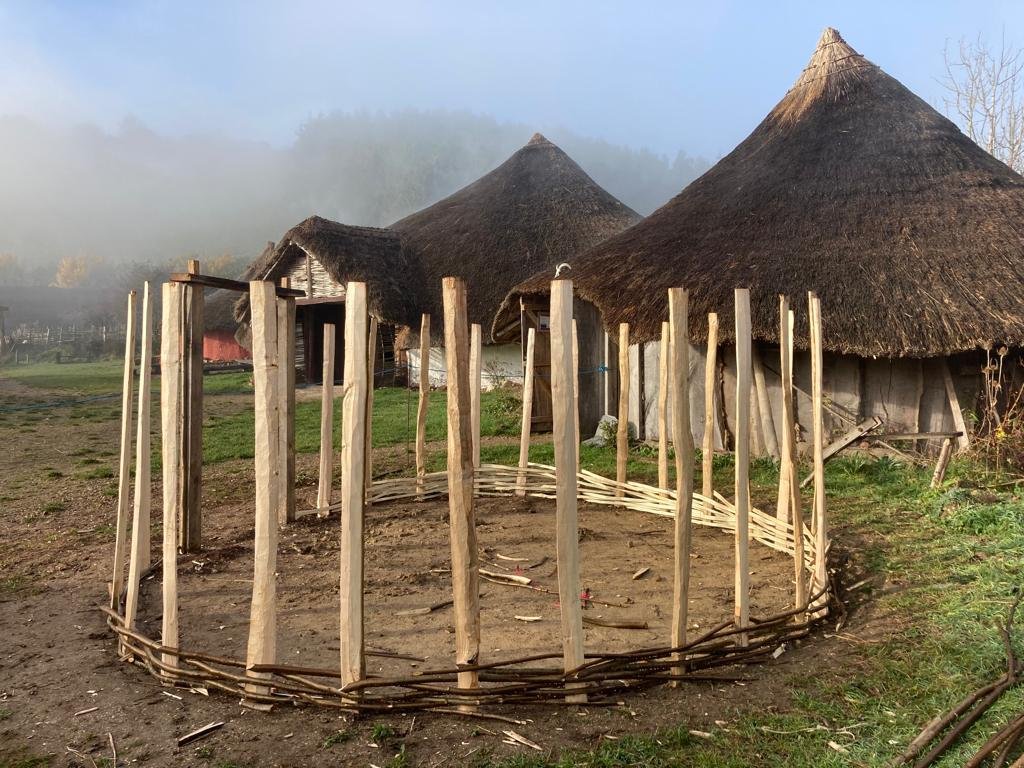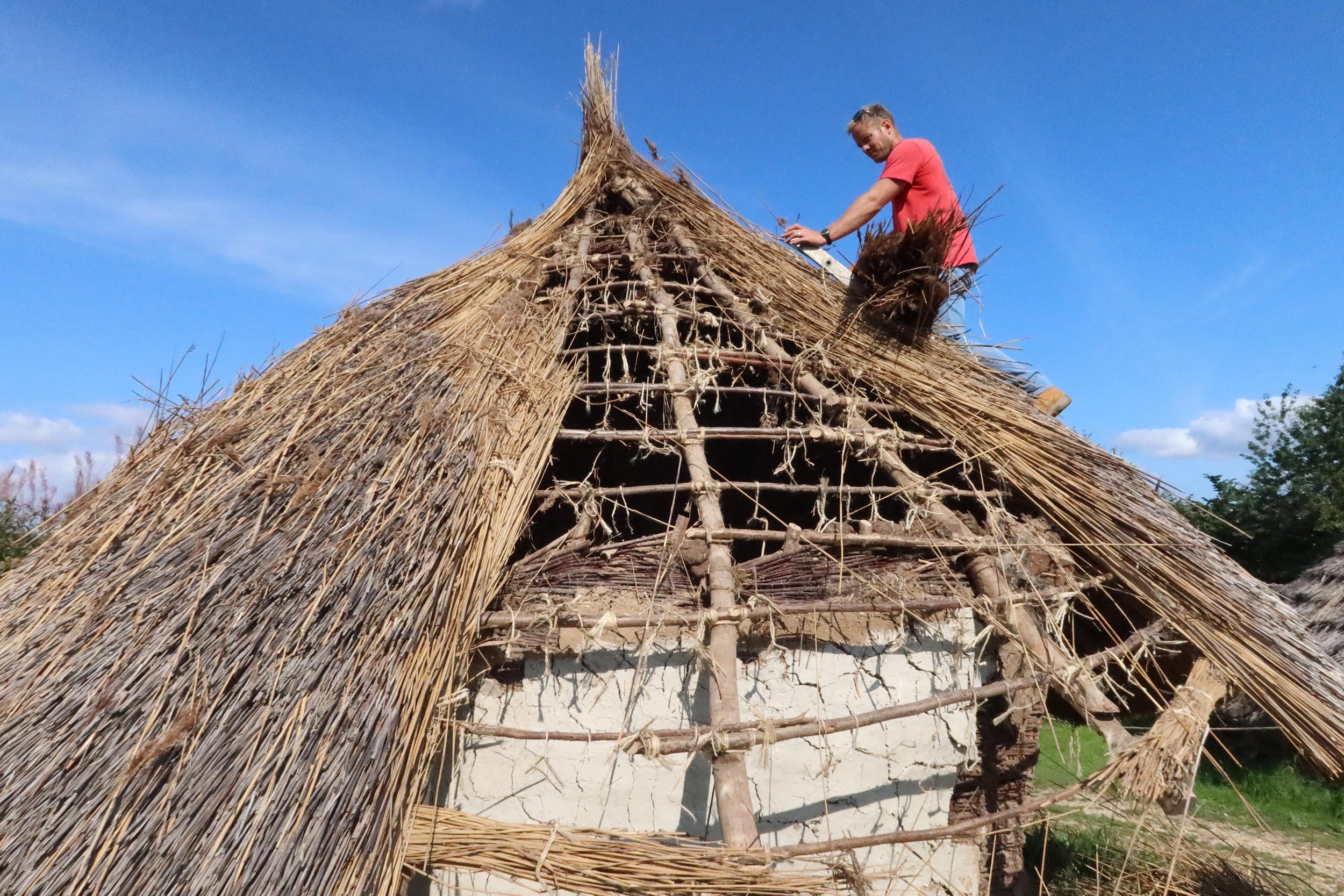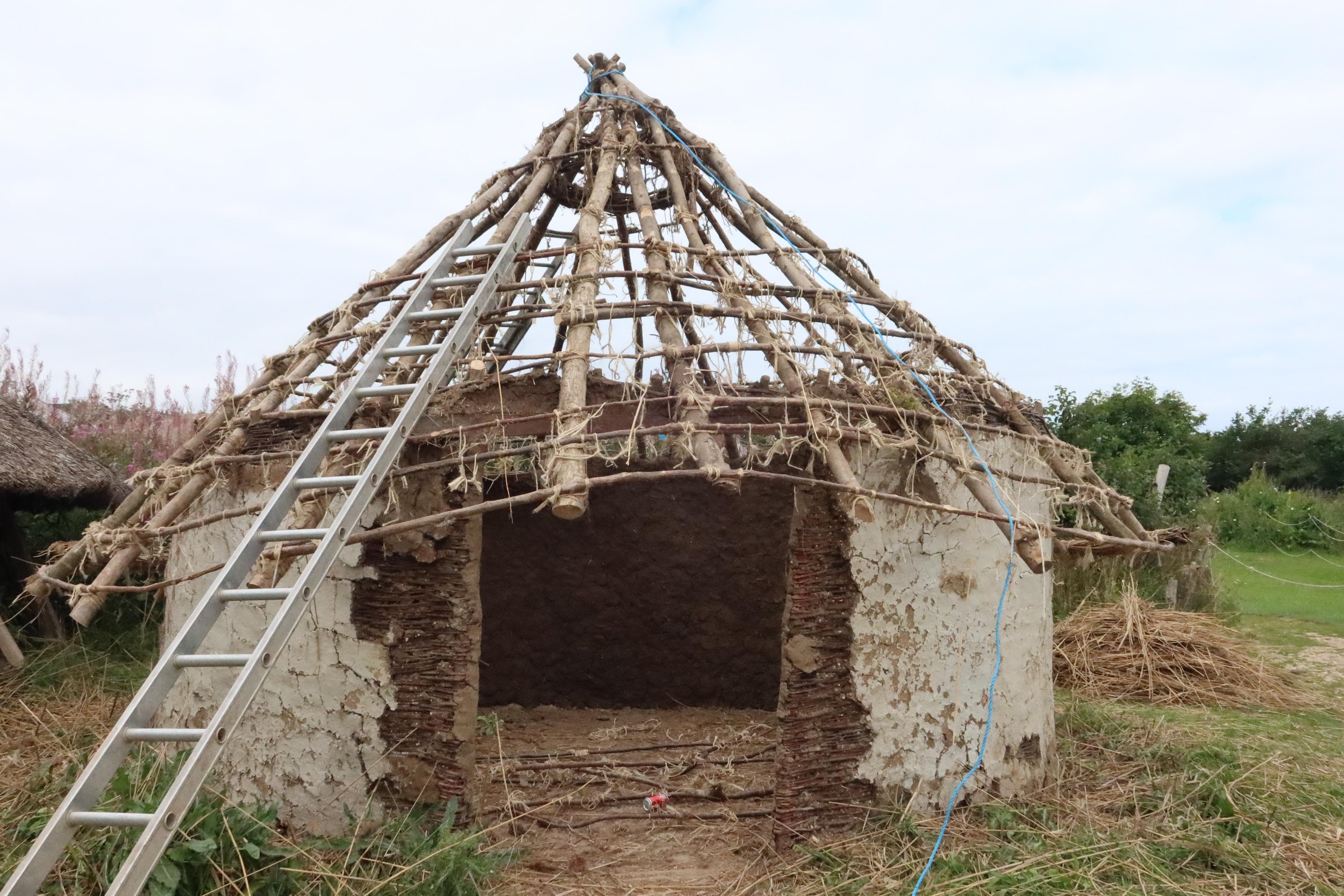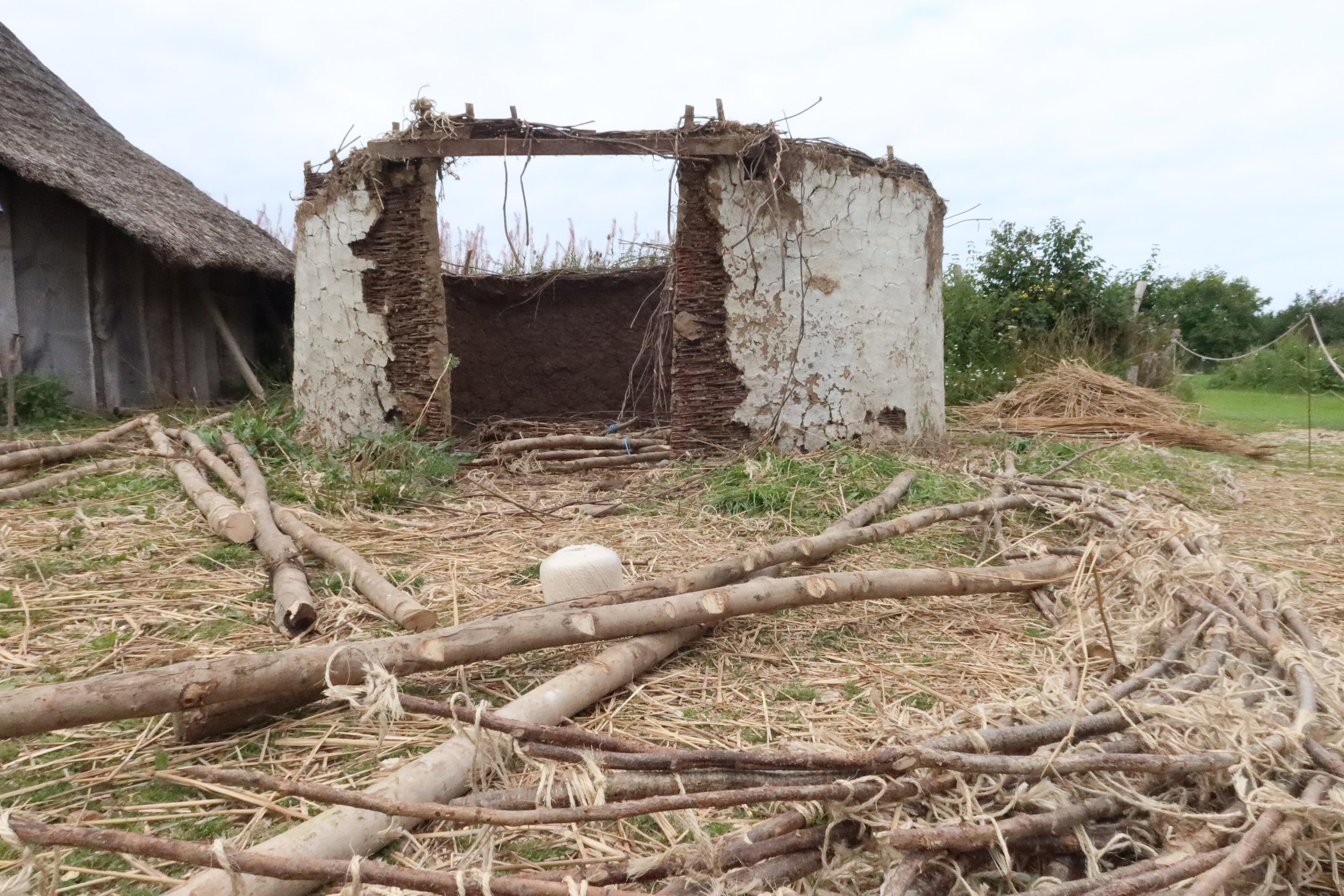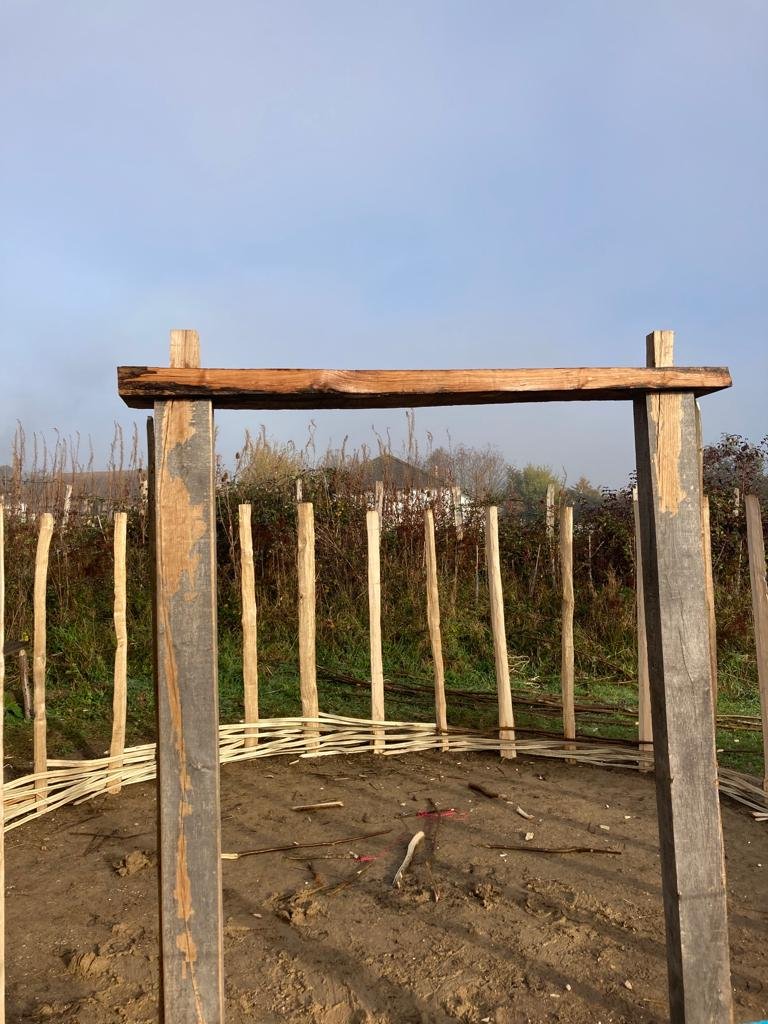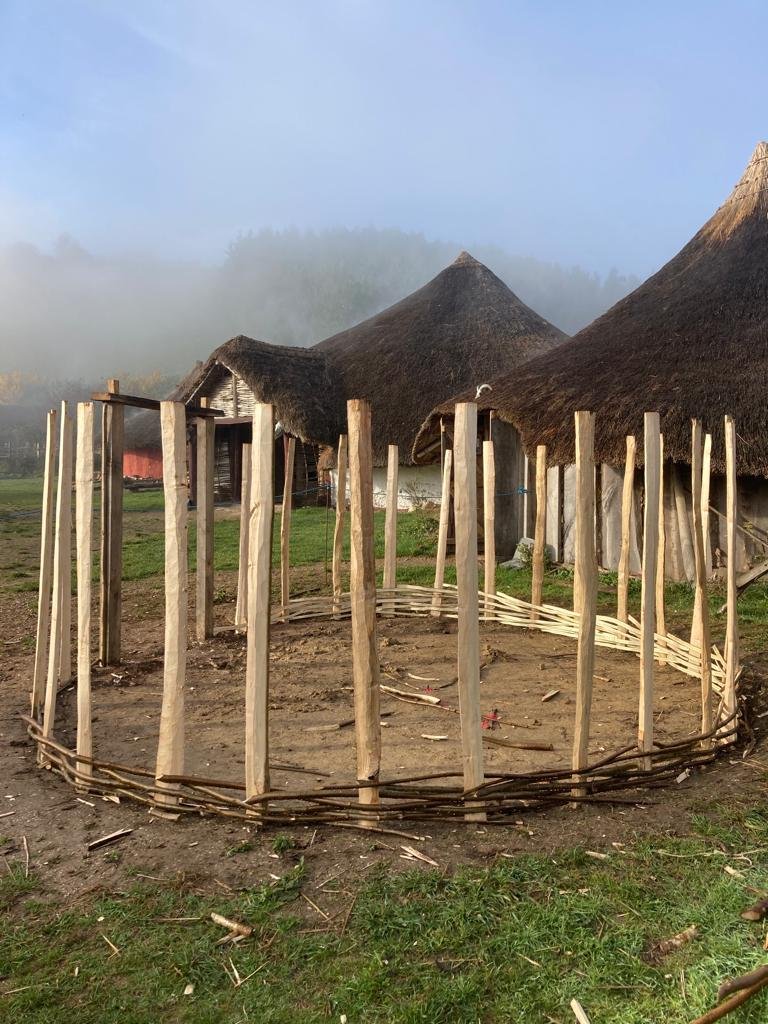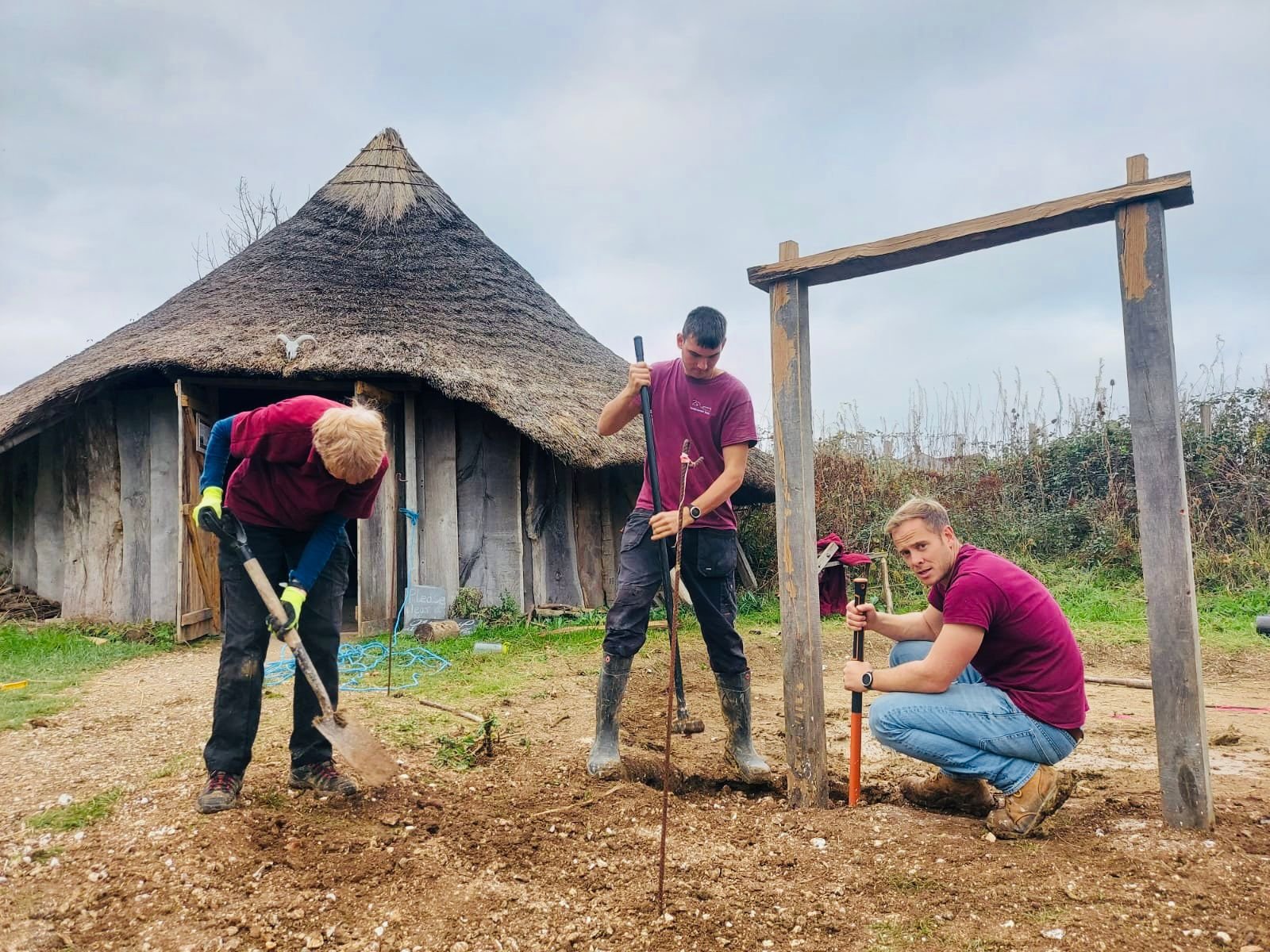From one roundhouse to another! We've moved from our Bronze Age roundhouse straight into the Iron Age!
Project Archaeologist Trevor Creighton explains our next roundhouse project - rebuilding the Iron Age roundhouse based on Glastonbury Lake Village M59.
A few weeks ago we noticed that our smallest roundhouse was starting to look a little tired and droopy(!). A quick check under its skin of daub revealed why. The posts that held it up had succumbed to a double assault of dry rot and woodworm. It had lasted 12 years which, given that its frame was no more than slim hazel uprights woven through with even slimmer willow withies to form a ‘wattled’ wall, that was a pretty good innings. The little roundhouse was based on one excavated around 1900 on the Avalon Marshes, near Glastonbury. As the name suggests, it is a wet area, and even wetter over 2000 years ago in the Iron Age when the original was built. The industrious inhabitants had built a series of artificial mounds to keep their, and their houses’, feet dry. Our building was based on one of those houses from a mound which the excavators identified as ‘Mound 59’, and so its official name, derived from the ever-poetic terminology of archaeology, was M59. Wow.
Archaeologists have made estimates for the life of those buildings of around 10 years. Multiplying that by the number of times they were rebuilt – up to 10 – it has been estimated that the settlement on the Marshes lasted somewhere between 100 – 150 years or thereabouts. So, our 12 year old house is in the ballpark, and so it does what experimental buildings should do. That is, help archaeologists better understand the lives of settlements and the people who lived in them. But our next chapter is now beginning – we are not yet finished with this little piece of archaeology and, like the phoenix, M59 mark 2 is rising from the ashes (well, not literally. More the ground). More recent research suggests that oak was perhaps a more likely material for the uprights than hazel, and that willow was scarce. As a result, Mark 2 is getting oak posts and split hazel wattling. Check back in about 10 – 15 years and we will tell you whether or not we need to adjust the figures on the longevity of the Avalon Marshes settlement!
